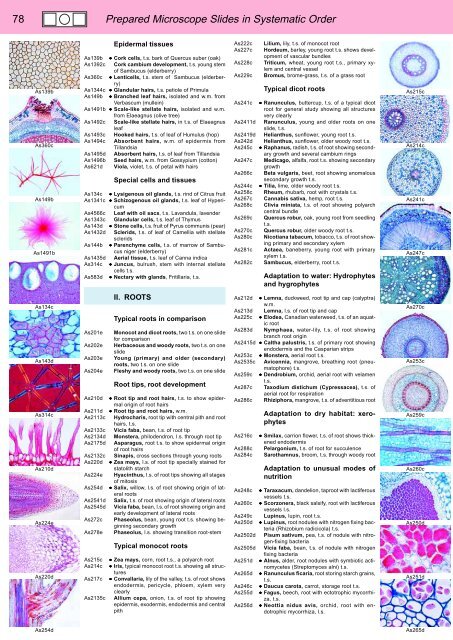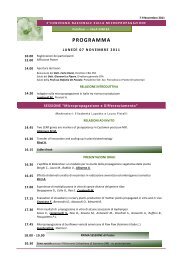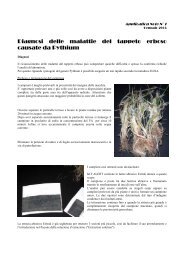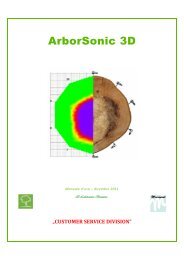BIOLOGY - microscopia.info
BIOLOGY - microscopia.info
BIOLOGY - microscopia.info
You also want an ePaper? Increase the reach of your titles
YUMPU automatically turns print PDFs into web optimized ePapers that Google loves.
78<br />
Prepared Microscope Slides in Systematic Order<br />
As139b<br />
As360c<br />
As149b<br />
As1491b<br />
Epidermal tissues<br />
As139b • Cork cells, t.s. bark of Quercus suber (oak)<br />
As1392c Cork cambium development, t.s. young stem<br />
of Sambucus (elderberry)<br />
As360c • Lenticells, t.s. stem of Sambucus (elderberry)<br />
As1344c • Glandular hairs, t.s. petiole of Primula<br />
As149b • Branched leaf hairs, isolated and w.m. from<br />
Verbascum (mullein)<br />
As1491b • Scale-like stellate hairs, isolated and w.m.<br />
from Elaeagnus (olive tree)<br />
As1492c Scale-like stellate hairs, in t.s. of Elaeagnus<br />
leaf<br />
As1493c Hooked hairs, t.s. of leaf of Humulus (hop)<br />
As1494c Absorbent hairs, w.m. of epidermis from<br />
Tillandsia<br />
As1495d Absorbent hairs, t.s. of leaf from Tillandsia<br />
As1496b Seed hairs, w.m. from Gossypium (cotton)<br />
As621d Viola, violet, t.s. of petal with hairs<br />
Special cells and tissues<br />
As134c • Lysigenous oil glands, t.s. rind of Citrus fruit<br />
As1341c • Schizogenous oil glands, t.s. leaf of Hypericum<br />
As4566c Leaf with oil sacs, t.s. Lavandula, lavender<br />
As1343c Glandular cells, t.s. leaf of Thymus<br />
As143d • Stone cells, t.s. fruit of Pyrus communis (pear)<br />
As1432d Sclerids, t.s. of leaf of Camellia with stellate<br />
sclerids<br />
As144b • Parenchyme cells, t.s. of marrow of Sambucus<br />
niger (elderberry)<br />
As1435d Aerial tissue, t.s. leaf of Canna indica<br />
As314c • Juncus, bulrush, stem with internal stellate<br />
cells t.s.<br />
As583d • Nectary with glands, Fritillaria, t.s.<br />
As222c<br />
As227c<br />
As228c<br />
As229c<br />
As241c<br />
As2411d<br />
As2419d<br />
As242d<br />
As245c<br />
As247c<br />
As266c<br />
As244c<br />
As258c<br />
As267c<br />
As268c<br />
As269c<br />
As270c<br />
As280c<br />
As281c<br />
As282c<br />
Lilium, lily, t.s. of monocot root<br />
Hordeum, barley, young root t.s. shows development<br />
of vascular bundles<br />
Triticum, wheat, young root t.s., primary xylem<br />
and central vessel<br />
Bromus, brome-grass, t.s. of a grass root<br />
Typical dicot roots<br />
• Ranunculus, buttercup, t.s. of a typical dicot<br />
root for general study showing all structures<br />
very clearly<br />
Ranunculus, young and older roots on one<br />
slide, t.s.<br />
Helianthus, sunflower, young root t.s.<br />
Helianthus, sunflower, older woody root t.s.<br />
• Raphanus, radish, t.s. of root showing secondary<br />
growth and several cambium rings<br />
Medicago, alfalfa, root t.s. showing secondary<br />
growth<br />
Beta vulgaris, beet, root showing anomalous<br />
secondary growth t.s.<br />
• Tilia, lime, older woody root t.s.<br />
Rheum, rhubarb, root with crystals t.s.<br />
Cannabis sativa, hemp, root t.s.<br />
Clivia miniata, t.s. of root showing polyarch<br />
central bundle<br />
Quercus robur, oak, young root from seedling<br />
t.s.<br />
Quercus robur, older woody root t.s.<br />
Nicotiana tabacum, tobacco, t.s. of root showing<br />
primary and secondary xylem<br />
Actaea, baneberry, young root with primary<br />
xylem t.s.<br />
Sambucus, elderberry, root t.s.<br />
Adaptation to water: Hydrophytes<br />
and hygrophytes<br />
As215c<br />
As214c<br />
As241c<br />
As247c<br />
As134c<br />
As143d<br />
As314c<br />
As210d<br />
As224e<br />
As220d<br />
As201e<br />
As202e<br />
As203e<br />
As204e<br />
As210d<br />
As211d<br />
As2113c<br />
As2133c<br />
As2134d<br />
As2175d<br />
As2132c<br />
As220d<br />
As224e<br />
As254d<br />
As2541d<br />
As2545d<br />
As272c<br />
As278e<br />
As215c<br />
As214c<br />
As217c<br />
As2135c<br />
II. ROOTS<br />
Typical roots in comparison<br />
Monocot and dicot roots, two t.s. on one slide<br />
for comparison<br />
Herbaceous and woody roots, two t.s. on one<br />
slide<br />
Young (primary) and older (secondary)<br />
roots, two t.s. on one slide<br />
Fleshy and woody roots, two t.s. on one slide<br />
Root tips, root development<br />
• Root tip and root hairs, t.s. to show epidermal<br />
origin of root hairs<br />
• Root tip and root hairs, w.m.<br />
Hydrocharis, root tip with central pith and root<br />
hairs, t.s.<br />
Vicia faba, bean, t.s. of root tip<br />
Monstera, philodendron, l.s. through root tip<br />
Asparagus, root t.s. to show epidermal origin<br />
of root hairs<br />
Sinapis, cross sections through young roots<br />
• Zea mays, l.s. of root tip specially stained for<br />
statolith starch<br />
Hyacinthus, l.s. of root tips showing all stages<br />
of mitosis<br />
• Salix, willow, l.s. of root showing origin of lateral<br />
roots<br />
Salix, t.s. of root showing origin of lateral roots<br />
Vicia faba, bean, l.s. of root showing origin and<br />
early development of lateral roots<br />
Phaseolus, bean, young root t.s. showing beginning<br />
secondary growth<br />
Phaseolus, l.s. showing transition root-stem<br />
Typical monocot roots<br />
• Zea mays, corn, root t.s., a polyarch root<br />
• Iris, typical monocot root t.s. showing all structures<br />
• Convallaria, lily of the valley, t.s. of root shows<br />
endodermis, pericycle, phloem, xylem very<br />
clearly<br />
Allium cepa, onion, t.s. of root tip showing<br />
epidermis, exodermis, endodermis and central<br />
pith<br />
As212d • Lemna, duckweed, root tip and cap (calyptra)<br />
w.m.<br />
As213d Lemna, l.s. of root tip and cap<br />
As225c • Elodea, Canadian waterweed, t.s. of an aquatic<br />
root<br />
As283d Nymphaea, water-lily, t.s. of root showing<br />
branch root origin<br />
As2415d • Caltha palustris, t.s. of primary root showing<br />
endodermis and the Casparian strips<br />
As253c • Monstera, aerial root t.s.<br />
As2535c Avicennia, mangrove, breathing root (pneumatophore)<br />
t.s.<br />
As259c • Dendrobium, orchid, aerial root with velamen<br />
t.s.<br />
As287c Taxodium distichum (Cypressacea), t.s. of<br />
aerial root for respiration<br />
As286c Rhiziphora, mangrove, t.s. of adventitious root<br />
As216c<br />
As288c<br />
As284c<br />
Adaptation to dry habitat: xerophytes<br />
• Smilax, carrion flower, t.s. of root shows thickened<br />
endodermis<br />
Pelargonium, t.s. of root for succulence<br />
Sarothamnus, broom, t.s. through woody root<br />
Adaptation to unusual modes of<br />
nutrition<br />
As248c • Taraxacum, dandelion, taproot with lactiferous<br />
vessels t.s.<br />
As260c • Scorzonera, black salsify, root with lactiferous<br />
vessels l.s.<br />
As249c Lupinus, lupin, root t.s.<br />
As250d • Lupinus, root nodules with nitrogen fixing bacteria<br />
(Rhizobium radicicola) t.s.<br />
As2502d Pisum sativum, pea, t.s. of nodule with nitrogen-fixing<br />
bacteria<br />
As2505d Vicia faba, bean, t.s. of nodule with nitrogen<br />
fixing bacteria<br />
As251d • Alnus, alder, root nodules with symbiotic actinomycetes<br />
(Streptomyces alni) t.s.<br />
As265d • Ranunculus ficaria, root storing starch grains,<br />
t.s.<br />
As246c • Daucus carota, carrot, storage root t.s.<br />
As255d • Fagus, beech, root with ectotrophic mycorrhiza,<br />
t.s.<br />
As256d • Neottia nidus avis, orchid, root with endotrophic<br />
mycorrhiza, l.s.<br />
As270c<br />
As253c<br />
As259c<br />
As260c<br />
As250d<br />
As251d<br />
As254d<br />
As265d







